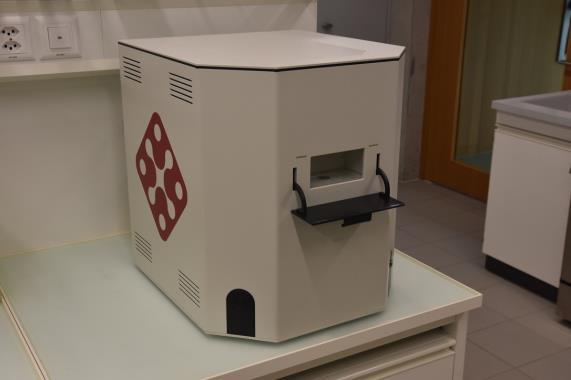
2 minute read
New Tools for Characterizing Quantum-Dot Displays
Quantum dots are a promising technology for use in LCD screens. With the help of quantum dots, the background illumination can be improved, resulting in more brilliant colors and at the same time simplifying the internal structure. In this project, we are extending existing simulation software and developing new measurement equipment to support research and development in this area.
Contributors: K. P. Pernstich, C. Kirsch, B. Ruhstaller Partner(s): Fluxim AG Funding: Innosuisse Duration: 2021–2024
Advertisement
In newer LCD screens, the backlight no longer consists of a light source that emits white light, e.g. a white LED, but of a combination of a blue LED and a quantum dot (QD) film. The QD film absorbs the blue light and emits it in one of the other primary colors, i.e. red or green, resulting in a more brilliant color reproduction.
In addition to LCD screens, organic light-emitting diodes (OLEDs) have also established themselves as a market-ready technology. Among certain other advantages, OLED screens offer better image quality than LCDs. Recent developments now seek to leverage the advantages of both technologies and use QD films together with blue OLEDs as a new technology. Figure 1 illustrates this new trend in the display industry.
To benefit from this new technology, Korean and Swiss partner organizations have joined forces in this international Innosuisse project. The Swiss partner company Fluxim is expanding its products in the areas of measuring instruments and simulation software. The Korean partner company is developing a process to encapsulate the quantum dots and thus make them more durable. At the Institute of Computational Physics, we are involved in the further development of a model to calculate the propagation of light as a function of its polarization direction and also in the development of a measuring device for the detailed investigation of QD films and QD OLED films. The academic partners in Korea are working on the fabrication and optimization of blue OLEDs and on an inkjet printing process to selectively deposit the QD films over individual OLEDs. Figure 2 shows the structure of such an OLED pixel with QD layer.
Fig. 2: Schematic representation of an OLED pixel with a QD film..
The project has only recently begun and the first QD films are already on their way to Switzerland to be characterized by us.

Fig. 1: QD film in an LCD screen (top) and in an OLED screen (bottom). Source: Nanosys Inc..








